Some Dornier Do-24 flying boats
Mon Dec 03, 2007 8:13 am
Originally it was designed and ordered for the Dutch KNLM, and licence produced in Holland, before also entering German service. Dutch Do-24s escaped to Australia after the Japanese invasion, and were used by the RAAF until serviceability dropped. There is still a Do-24 nose as a houseboat on the Murray river, but I've yet to track it down (the Murray is Australia's largest longest river.)
This one is one of the ex-Spanish Air Force examples (both the French and Spaniards used it for post-war ASR work) before being donated to the RAF Museum. They in turn loaned it to the Dutch Military Aviation Museum who reconfigured it to an aircraft known as 'The old Soldier' with a Mickey Mouse cartoon on. It was used in the Dutch East Indies after the Japanese invasion for clandestine work.
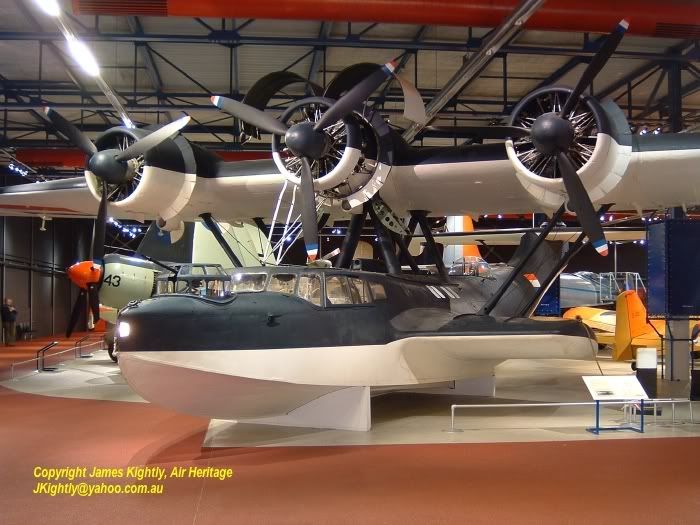
And what they looked like in Dutch service in Australia:

And then in RAAF use:
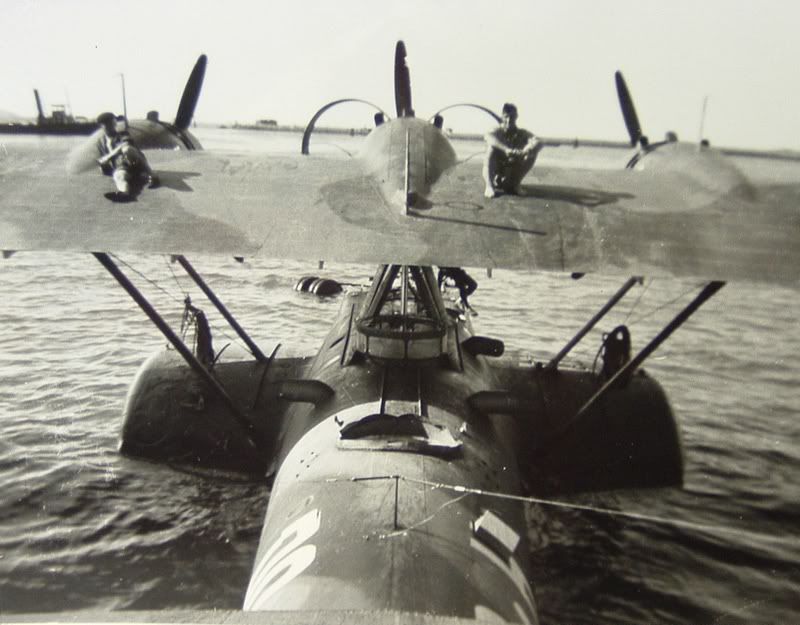
And finally, the sole Dornier Do-24ATT Technology demonstrator. An ex-Spanish Do-24 fitted with three turbos, retractable gear and a new Dornier wing. Now owned and flown by Iren Dornier, seen here a couple of years ago at Biggin Hill, UK.
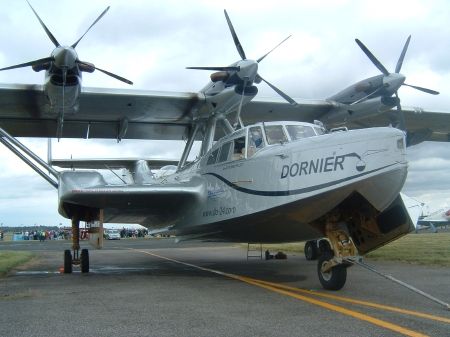
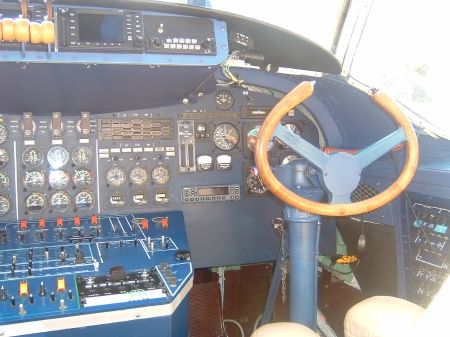
Not everyone gets to stand on a Dornier and watch a Spitfire go by at Biggin Hill. Old enemies, new friends.
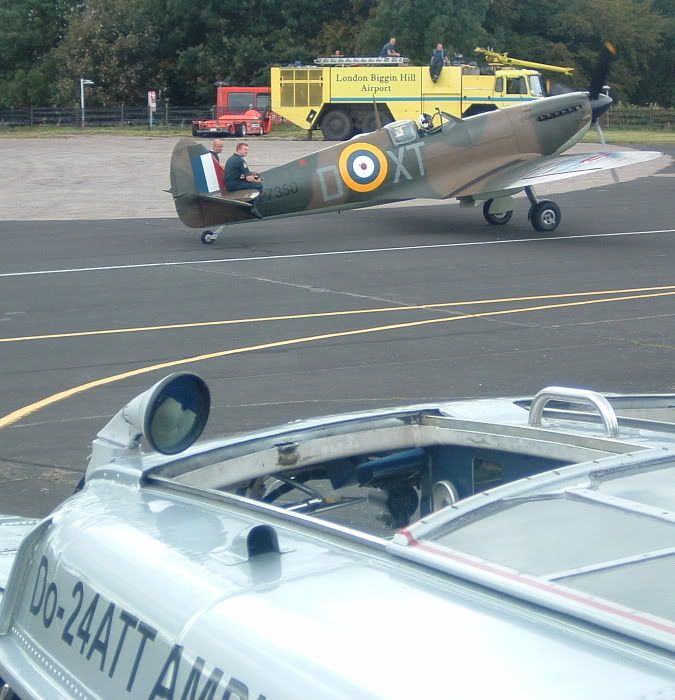
Cheers,
This one is one of the ex-Spanish Air Force examples (both the French and Spaniards used it for post-war ASR work) before being donated to the RAF Museum. They in turn loaned it to the Dutch Military Aviation Museum who reconfigured it to an aircraft known as 'The old Soldier' with a Mickey Mouse cartoon on. It was used in the Dutch East Indies after the Japanese invasion for clandestine work.

And what they looked like in Dutch service in Australia:

And then in RAAF use:

And finally, the sole Dornier Do-24ATT Technology demonstrator. An ex-Spanish Do-24 fitted with three turbos, retractable gear and a new Dornier wing. Now owned and flown by Iren Dornier, seen here a couple of years ago at Biggin Hill, UK.


Not everyone gets to stand on a Dornier and watch a Spitfire go by at Biggin Hill. Old enemies, new friends.

Cheers,
Mon Dec 03, 2007 10:35 am
Our TA-4 was restored/reassembled at AVCRAFT in Myrtle Beach N.C. Avcraft is the company that acquired the Dornier assets when they went bankrupt. The Myrtle Beach facility was created to do the heavy maintenance on the Dornier 328T and 328 Jet. I walked into their office one day and a very unassuming guy was sitting against the wall. He was introduced to me as Iren Dornier. He was just stopping in to say hello and was very interested in the Skyhawk. He didn't bring the Do-24ATT with him. It was in another part of the world waiting to fly its next leg of the around the world tour. He seems to be a very nice guy.
Mon Dec 03, 2007 11:56 pm
That's an excellent article Mgawa. Your photos? All very nice. I'd look ed it up before, IIRC, but thanks for the reminder.
RickH, interesting, thanks. I had some correspondence and a longish interview with Iren at Biggin, and he was charming, down to earth and very open. Putting the ATT back into airworthy condition was quite the job.
The website for the aircraft is: www.do-24.com It's rather fancy and flashy, but interesting.
RickH, interesting, thanks. I had some correspondence and a longish interview with Iren at Biggin, and he was charming, down to earth and very open. Putting the ATT back into airworthy condition was quite the job.
The website for the aircraft is: www.do-24.com It's rather fancy and flashy, but interesting.
Tue Dec 04, 2007 12:05 am
Interesting thread James. I'd seen the ATT in the museum at Oberschleissheim in around 1997 or 1998. Good to see it back in the air again.
http://www.do-24.com/
http://www.do-24.com/
Tue Dec 04, 2007 12:10 am
it's profile is so low to the water, i'd bet the the possibility of swamping in rough water conditions was a real hazard.
Tue Dec 04, 2007 12:22 am
I saw it fly at Oshkosh, and it was really great to see.
Tue Dec 04, 2007 12:48 am
tom d. friedman wrote:it's profile is so low to the water, i'd bet the the possibility of swamping in rough water conditions was a real hazard.
You'd think so, but no. Until the modern hydrodynamic design of the Shin Meiwa, it was almost certainly the most seaworthy seaplane of the period (allowing for size). Handled waves and swell better than any Allied 'boat, and with sponsons rather than floats much less likely to lose a stabiliser and turn turtle, which accounted for hundreds of Allied 'boats. The Boeing 314 had sponsons (an exception in Allied and Japanese types) and was a great aircraft, but not as tough as the Dornier. Could bash through for take off and landing in sea states and in wave heights no Grumman (excellent 'boats) generally should handle (those floats again).
Keeping the hatches closed is a good idea, though.
Have a look at Mgawa's link - interesting stuff.
Last edited by JDK on Tue Dec 04, 2007 12:54 am, edited 1 time in total.
Tue Dec 04, 2007 12:52 am
tom d. friedman wrote:it's profile is so low to the water, i'd bet the the possibility of swamping in rough water conditions was a real hazard.
Actually, the Dorniers were considered to be excellent flying boats in rough, open water.
The earlier Wals, Super Wals and Do 18s were all flown over open water with little fear for rough water landings.
Tue Dec 04, 2007 3:22 am
G'day James,
Interesting thread about a fairly obscure type. There is indeed a Do-24 houseboat here in Australia, although it no longer serves as such, having been based on terra firma for probably at least 5 years now. It would be that sort of time frame since I managed to have a look at it. It was certainly set aside for preservation, although re-structuring of the organisation's displays leaves me wondering if they've still got it.
Hope all is well mate.
Cheers,
Matt
Interesting thread about a fairly obscure type. There is indeed a Do-24 houseboat here in Australia, although it no longer serves as such, having been based on terra firma for probably at least 5 years now. It would be that sort of time frame since I managed to have a look at it. It was certainly set aside for preservation, although re-structuring of the organisation's displays leaves me wondering if they've still got it.
Hope all is well mate.
Cheers,
Matt
Tue Dec 04, 2007 3:37 am
Dear JDK- some image I also have but article and photo material is made by Nico Braas. He is now preparing article about the French flying boats. No problem if you or any else want to see larger size image.
Tue Dec 04, 2007 4:17 am
" take off and landing in sea states and in wave heights no Grumman (excellent 'boats) generally should handle (those floats again)."
Only the Albatross and to a lesser extent, the Duck were really suited for rough, open water.
The other Grumman boats were limited to sea heights of under 3 feet max
for the Mallard and less for the Goose and Widgeon.
If I remember correctly the Widgeon was limited to waves of no more than 18 inches, then they started hitting the prop blades.
The tip floats were really no problem since the struts were fairly short and the floats were well braced.
Only the Albatross and to a lesser extent, the Duck were really suited for rough, open water.
The other Grumman boats were limited to sea heights of under 3 feet max
for the Mallard and less for the Goose and Widgeon.
If I remember correctly the Widgeon was limited to waves of no more than 18 inches, then they started hitting the prop blades.
The tip floats were really no problem since the struts were fairly short and the floats were well braced.
Tue Dec 04, 2007 5:05 am
Durch crew more prefer it then Catalina.
Tue Dec 04, 2007 6:03 am
Thanks for the input, and answers!
True, but I'd think inferior in terms of safe landings and take-offs on rough water to a sponson arrangement. I'm no seaplane pilot (as well as no pilot) but the stresses, turning moments and chance of float loss are presumably much more significant than the buoyancy and 'tender' return to upright (without risk) of the sponsons, on a choppy sea with floats hitting crests or going into waves.
Mr Widgeon wrote:The tip floats were really no problem since the struts were fairly short and the floats were well braced.
True, but I'd think inferior in terms of safe landings and take-offs on rough water to a sponson arrangement. I'm no seaplane pilot (as well as no pilot) but the stresses, turning moments and chance of float loss are presumably much more significant than the buoyancy and 'tender' return to upright (without risk) of the sponsons, on a choppy sea with floats hitting crests or going into waves.
Tue Dec 04, 2007 6:33 am
JDK- you are from Australia, do you know anything about one hull of this airplane which is converted into the classic toursit boats and still is operated? Do you have any images? Hope I don't ask too much.